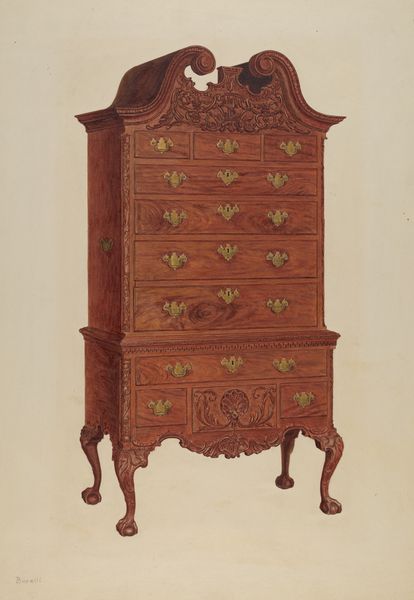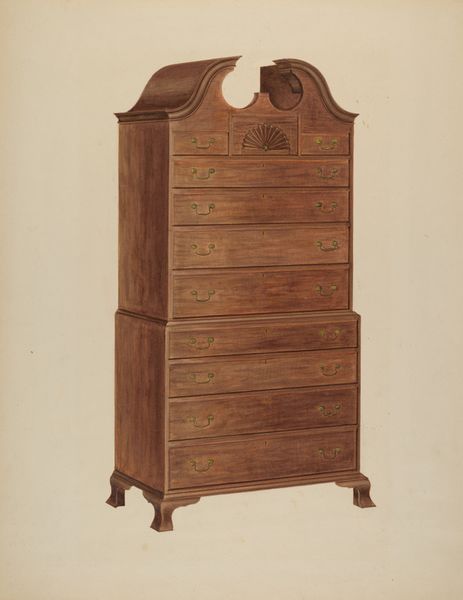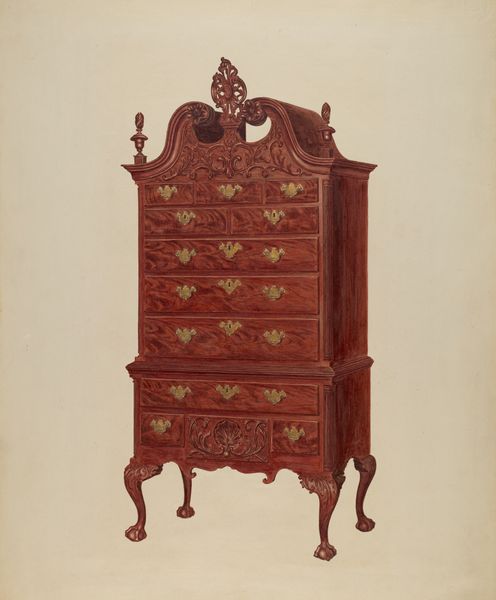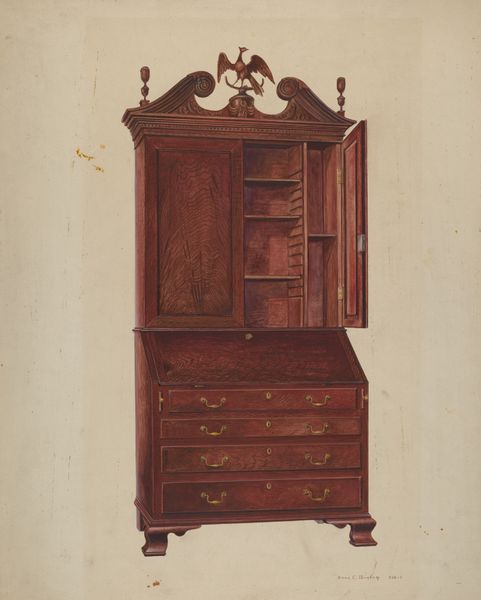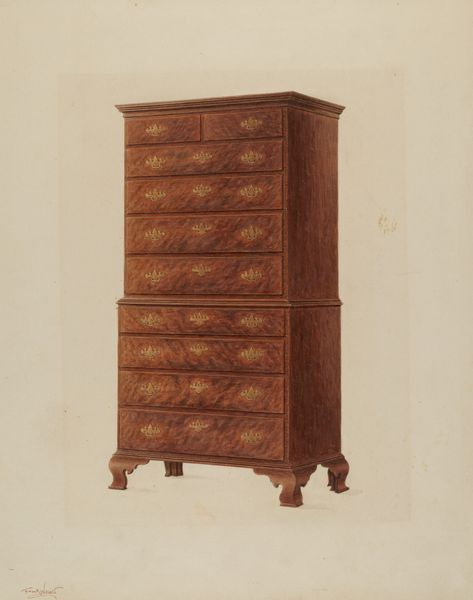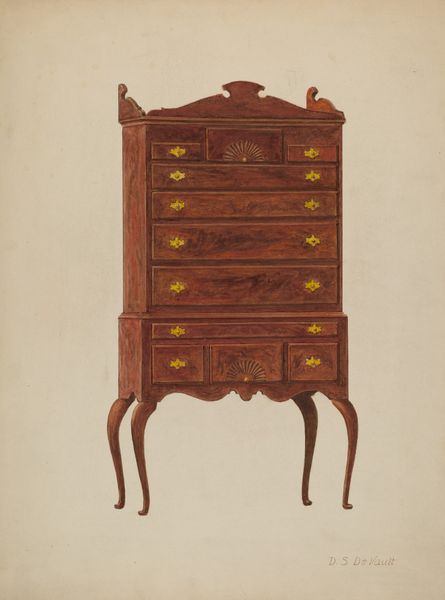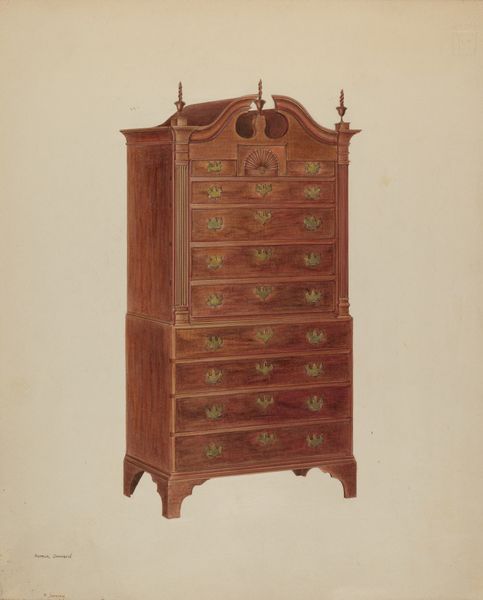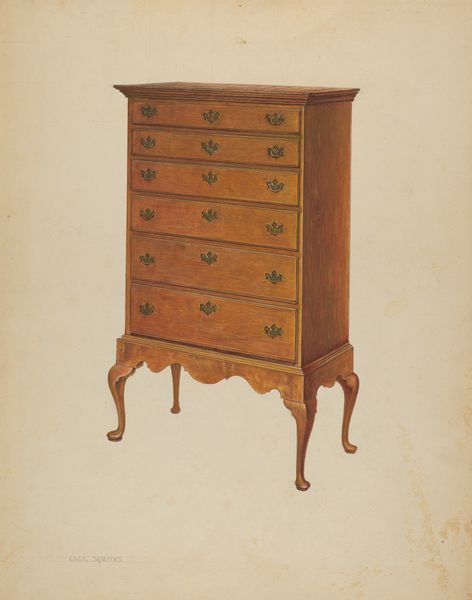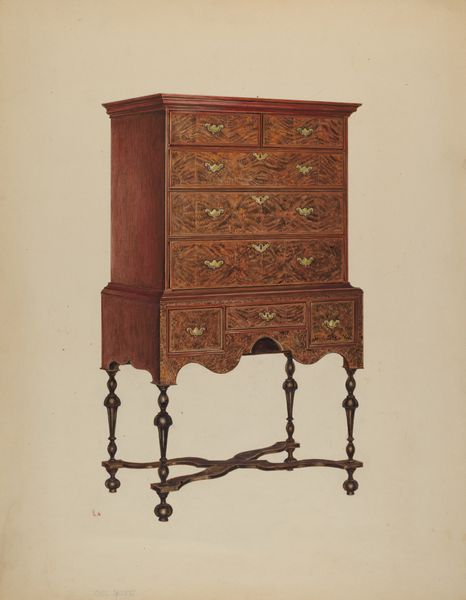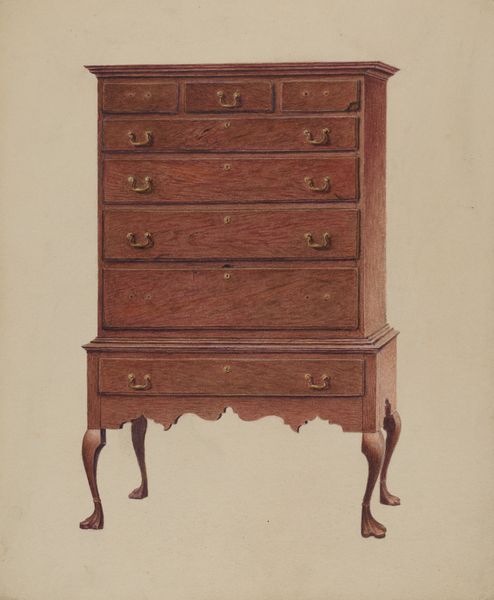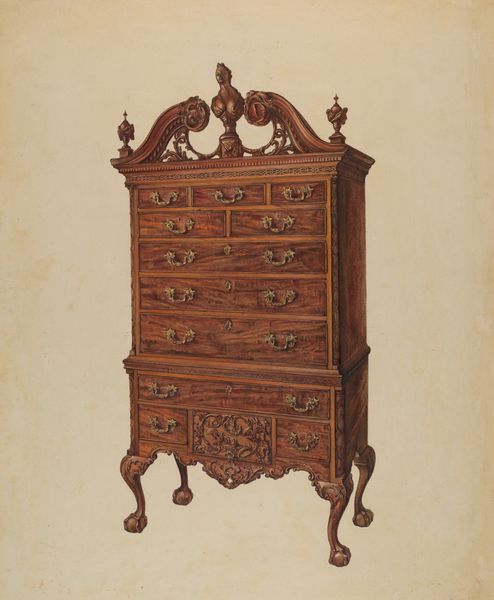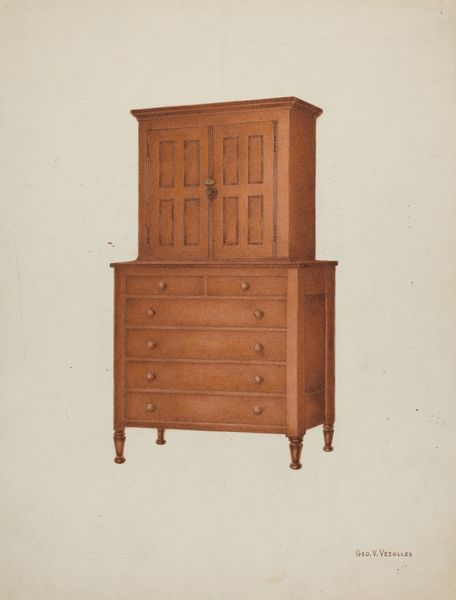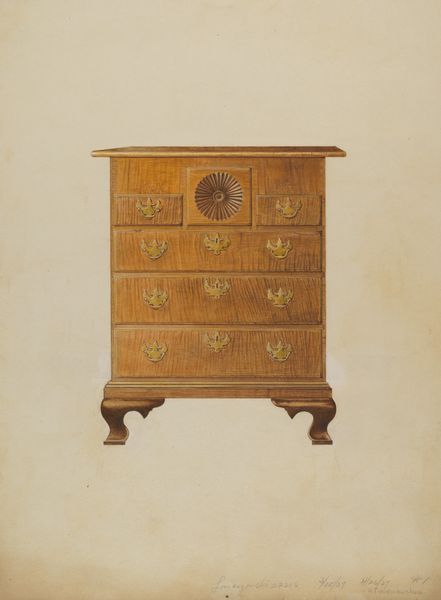
drawing, watercolor
#
drawing
#
watercolor
#
decorative-art
Dimensions: overall: 55.8 x 40.5 cm (21 15/16 x 15 15/16 in.) Original IAD Object: none given
Copyright: National Gallery of Art: CC0 1.0
Curator: Here we have "Chest-on-Chest," created around 1939 by Lawrence Phillips. It's rendered with watercolor and drawing techniques. The image portrays just what the title suggests. Editor: It feels surprisingly imposing, even as a drawing. It almost looks like a small, sturdy building. The colors are soft, but the chest's verticality dominates the space. Curator: Indeed. These kinds of representations were common in the decorative arts. They were used in the Index of American Design, a New Deal program that aimed to document and preserve examples of American craftsmanship. It reflected a broader cultural moment, with many artists commissioned to make these drawings. Editor: That's fascinating. Seeing this as part of the New Deal program immediately gives it another layer. It isn't simply a drawing of furniture; it becomes about preserving and celebrating this kind of functional craft at a time when craft, skill, and history were possibly being lost due to economic and cultural shifts. Was there a socio-political motivation for cataloging items like these? Curator: Precisely. The Index aimed to bolster national identity by showcasing American artistic traditions, particularly during a period of economic depression. So these renderings weren’t neutral. They reflected certain aesthetic preferences and assumptions about American culture. The colonial-era aesthetic of the chest becomes a symbol for earlier times. Editor: I wonder about that symbolism. It's like this chest becomes a silent archive for stories of labor, immigration, the treatment of skilled trades, class, etcetera, from back in those "earlier times," some of which could have been brutal and/or unfair. This Index is definitely about nostalgia. Does the project celebrate progress, or is it longing for a perceived lost simplicity? I feel that the agenda should consider more points of view, too. Curator: It's true that such projects reflect the values and power structures of their time. This image represents an idealized vision, to an extent. In fairness, these kind of representations provided invaluable records of historical objects, informing design and preservation efforts for decades. Editor: Absolutely. It’s about interrogating the narratives and power structures embedded within these records. Art pieces should spark thoughtful conversation about those records and historical contexts in our current culture. Curator: I agree. The image can prompt conversations on how we value craftsmanship, the role of cultural institutions in shaping narratives, and the intersection between art, identity, and social change. Editor: Exactly! The watercolor hues of Phillips's Chest-on-Chest and that quaint bird carving up top remind us that even in apparent stillness, objects are packed full of a multiplicity of meanings and stories.
Comments
No comments
Be the first to comment and join the conversation on the ultimate creative platform.
